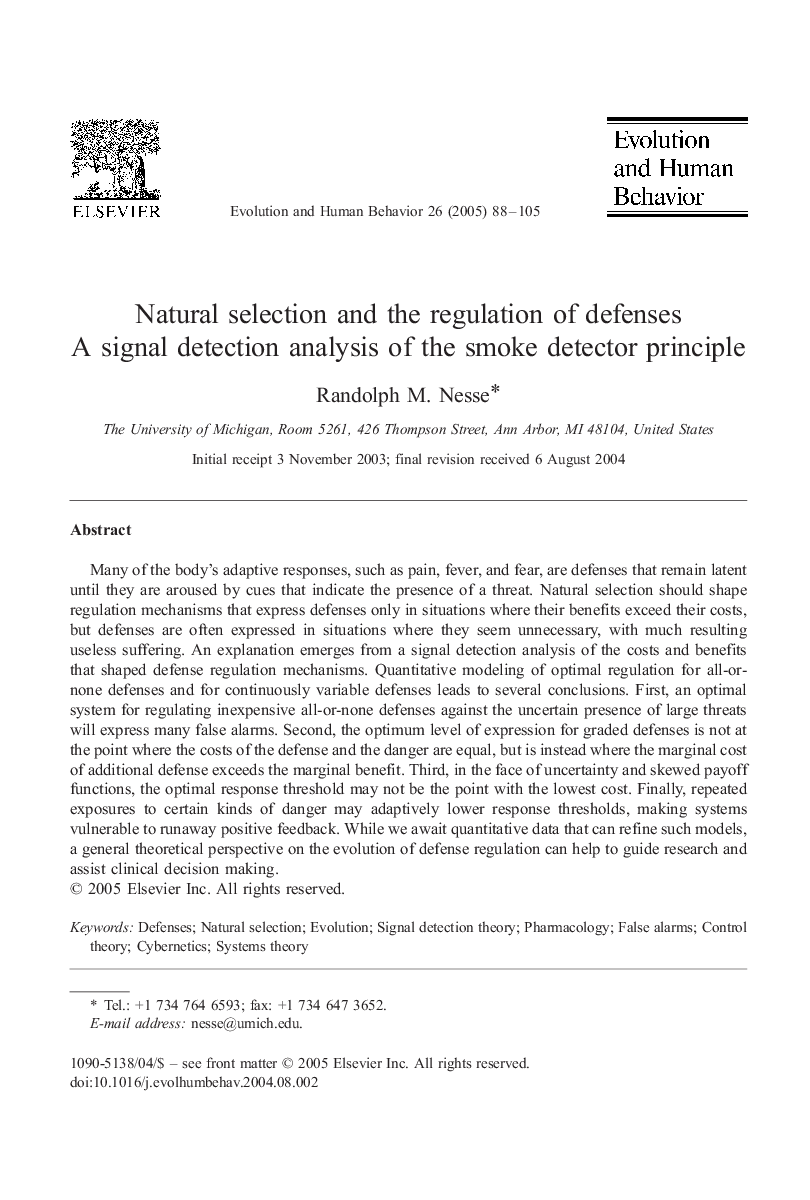| Article ID | Journal | Published Year | Pages | File Type |
|---|---|---|---|---|
| 10464118 | Evolution and Human Behavior | 2005 | 18 Pages |
Abstract
Quantitative modeling of optimal regulation for all-or-none defenses and for continuously variable defenses leads to several conclusions. First, an optimal system for regulating inexpensive all-or-none defenses against the uncertain presence of large threats will express many false alarms. Second, the optimum level of expression for graded defenses is not at the point where the costs of the defense and the danger are equal, but is instead where the marginal cost of additional defense exceeds the marginal benefit. Third, in the face of uncertainty and skewed payoff functions, the optimal response threshold may not be the point with the lowest cost. Finally, repeated exposures to certain kinds of danger may adaptively lower response thresholds, making systems vulnerable to runaway positive feedback. While we await quantitative data that can refine such models, a general theoretical perspective on the evolution of defense regulation can help to guide research and assist clinical decision making.
Keywords
Related Topics
Life Sciences
Agricultural and Biological Sciences
Ecology, Evolution, Behavior and Systematics
Authors
Randolph M. Nesse,
